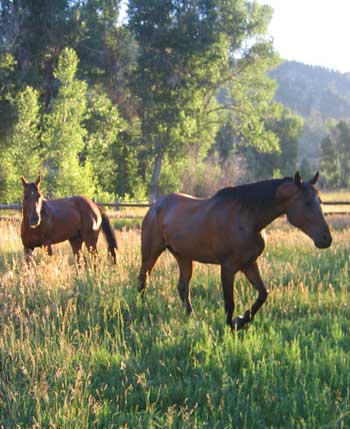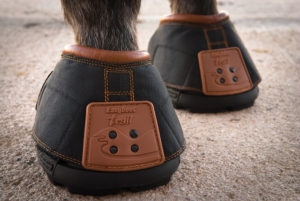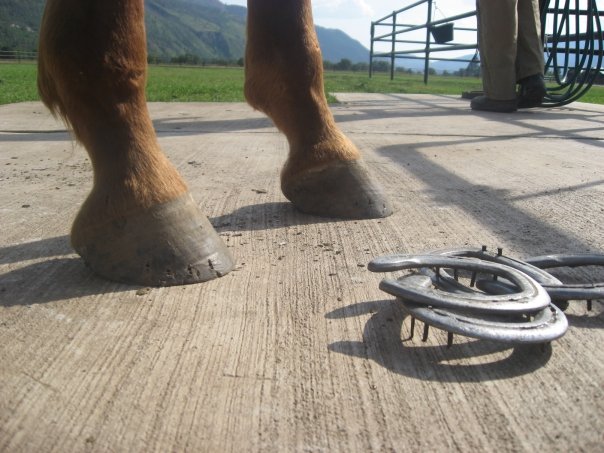Have you ever wondered why it can take months for a horse to fully transition to going barefoot? Or why the horse that was “sound” in shoes is tender-footed without them?
Conditioning the newly bare hoof can be compared to strength or endurance training for yourself. You wouldn’t simply wake up one day, walk into a gym for the first time in your life, and expect to bench press a few hundred pounds. You have to build your muscular endurance over time, asking a little more of your body gradually, until you are strong enough.
The same goes for your horse. Putting in the work consistently and patiently is the best way to build up your horse’s barefoot hooves. Gradually conditioning the hoof to the type of terrain the horse will be working on, and the type of work the horse will be expected to do, is the only way to develop a healthy hoof capable of performing the job required of it.

Why, then, do horseshoes allow horses to perform the same work without conditioning the foot?
Most of the time, the hoof simply is not given a chance to acclimate to work before a shoe is nailed on. Two-year-olds about to go into training are routinely shod before they begin work. Many horse owners and managers have just always done it this way.
It stands to reason that, if the two-year-old was left barefoot when he began training, his feet would have the opportunity to develop along with the rest of his muscles being put to work for the first time. This is, of course, an oversimplification because the colt’s stabling environment, diet, and the quality of the barefoot trimming he receives, not only during his training, but up until he begins training, also come into play. Just for the sake of argument, suppose that these factors were all normal and healthy. We could finally reverse the shoeing trend and raise horses with truly healthy, sound feet.
Once the horse is shod, the hoof is prevented from developing and moving as it would naturally. The hoof becomes weaker and loses strength, like an unused muscle. It can be compared to a human wearing a brace or a splint. While the splint supports a weakness, the weakness will only become more pronounced if the splint is used continually. Using the limb without the splint is the only way to strengthen the limb. This process can be uncomfortable or even painful, but it is the only way to regain the use of a weakened or injured limb. The same is true for rehabilitating a hoof that has been shod.

When you are ready to remove traditional shoes and transition your horse to barefoot, Easyboots can help! Easyboots are a great option to protect and support your horse’s hooves when you’re riding, as well as during turnout if your horse’s hooves are extra-sensitive. Your horse’s hooves will likely change size and shape slightly in the months following the removal of steel shoes. This can make sizing boots more of a challenge, but we’re here to help! Please call 800-447-8836 with any questions, or send us an email.





